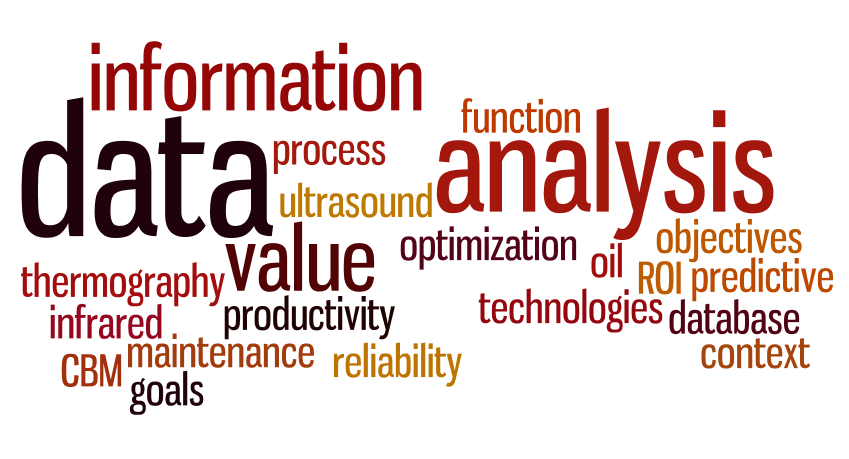How to turn your CBM data into information?
In essence, Condition Based Maintenance (CBM) is a process driven by data.

"Big Data", one of the major topics in the industry, emerges in response to the interest and demand for data collection within work settings. Some terminology should be clarified. When we talk about facts we refer to numbers without meaning, while when speaking of information we refer to analyzed data that has meaning within a particular context. We must understand that data without analysis is meaningless. The data collection just for the sake of capturing it presents no value to the company. Data becomes relevant when its meaning, function, and direction is determined.
How to turn data into information?
1- Define the function, goals and objectives of what we want to describe or analyze.
2- Identify the method and required data.
3- Define the data collection process.
4- Define the data interpretation process.
5- Define the graphic presentation of the data.
6- Verify if the personnel has the qualifications and certifications needed for the process of turning data into information.

Within the context of the industry, one of the objectives of the maintenance program should be to identify deviations in enough time to plan and schedule corrective actions with the least impact to the operation of the plant. To meet this objective it is necessary to identify the different ways in which equipment can fail (failure modes). Failure modes can be anticipated with the use of predictive technologies such as vibration analysis, oil analysis, infrared thermography, and ultrasound. This data can be collected with portable equipment through a set frequency. To ensure proper data collection, the technical staff should be trained and qualified in the use of instruments and how to collect data of the chosen equipment. Once the data has been collected, it is analyzed in order to be compared with preset parameters and identify whether or not the equipment's condition is within acceptable parameters. If they are not, it is necessary to diagnose the root cause of the deviations and the severity of the condition of the equipment. This way, data is given meaning within the operational context of the organization.
In essence, Condition Based Maintenance (CBM) is a process driven by the data. It is the collection and analysis of facts to determine what corrective tasks must be performed. The key is to make sure your CBM team is analyzing the correct data.
Unfortunately, many companies invest a lot of time interpreting bad data because the specifications for data collection were set incorrectly from the start. Therefore, the CBM program may not work as expected, that is identifying equipment problems. This is why creating CBM databases is an important step. Managed properly, these databases allow and provide reliability in the detection alarms of impending problems. If the database is configured correctly, a vibration analyst can collect and analyze data from 400-450 pieces of equipment per month. Without it, productivity is reduced by 50%, to 200-225 equipment per month per technician.
As can be seen, the configuration of the database has a positive and direct correlation between team productivity and the CBM program success. Depending on the size of the plant, creating these databases may require considerable time and effort. However, experience has shown us that it is worth investing time and resources in this phase because the return on investment is excellent.
----
Author: Félix M. Laboy; EIT, CMRP, CRL